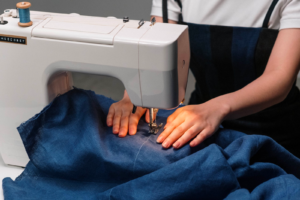
Designing small spaces is often difficult and the stakes are high to get it right. When you need to decorate a room but space is limited, such a harmless decision as selecting a rug or dining table can accentuate the obvious lack of space or give the room a chance to appear much smaller than it is. you have lived in a small space, you know very well that you have much more than one can imagine to be successful in small space development.
Planning a small space can be a very difficult task because there are many things to consider

But it doesn’t matter if you live in a small apartment or a house, you definitely want to make the interior look more spacious. Unfortunately, when trying to keep up with interior design trends, many of us unintentionally make design mistakes that reduce interior space. And it’s not just the cramming of the rooms with large furniture that makes the space visually smaller. So if you are eager to optimize your living space and successfully decorate it in a more elegant way, in this article you will find the mistakes that you should not make at all costs.
For the design of small spaces light colors are often preferred

Avoid placing furniture against walls in small spaces
While it may seem logical pushing furniture against walls will create more open space in the center of the room and therefore make it appear wider, it can actually reduce the space visually. To avoid creating the illusion of a Lilliputian living room, interior designers recommend pushing your furniture about 10cm from the walls to provide shade. This will create the illusion of depth and allow the room to appear larger and your small space arrangement will be more successful. It is advisable to always leave a little free space between the furniture and the walls.

Avoid painting all the walls in a dark color in small spaces
Colors like blue, gray and dark green will certainly add character to the interior design, but you may want to avoid using those colors on all walls and put the whole room in the same color. Painting the entire room in a dark color can quickly block it out. In the event that you want to visually optimize the space, specialists recommend painting two walls opposite each other in the dark color of your choice that will visually repel the walls creating the impression of having a larger room.

Avoid filling every corner of the room with furniture
Do you want to be successful in optimizing small spaces? So, try compiling vignettes in your space instead of filling rooms to the brim with furniture. The layout of all the furniture in a room gives the eye no place to rest and can even give a decent-sized room a small and cluttered appearance. If you want to correct this mistake, specialists recommend grouping the furniture on a rug to create a conversation space.

Furniture for a small space is all about proportions. Simply put, if a piece touches the limits of the room, up and down or to the side, it is too large. To create a feeling of spaciousness, always leave some air between the sides of your furniture and the walls. The only exception is a bed. A large bed placed between two walls, for example, creates a cozy sleeping space. Also avoid heavy pieces that take up too much usable space in the room. For example, an elegant sofa or chair will give you as much living space as its stuffed cousin but will take up much less of your room. If you’re craving a big, eye-catching piece (a piece of art or a mirror), hang it on the wall. Don’t consume valuable living space by placing it on the floor.

Avoid painting walls with high contrast colors and distinct finishes in small spaces
A dark wall with a light border can be nice to look at, but can create a disjointed feel that visually reduces the space, according to interior designers. To visually expand the space, specialists recommend creating a slight contrast between the color of the walls and the finish.

Avoid using pile rugs in small spaces
The more small rugs you have in a room, the smaller it will look. To visually optimize your interior space, you should try to create a clean frame for the small room by placing a rug about 6 to 18 inches above the legs of the sofa and chairs, suggest interior decorators.

Avoid leaving white walls in small spaces
While light-colored walls tend to make a space appear larger than dark-colored walls, opting for an all-white space can create the illusion of a smaller space. The color on the walls attracts the attention of the entire space. Having furniture in contrasting tones to the walls can help reduce visual volume. So for a successful small space design, avoid putting all the walls in white.

Go for a wall decor with artistic paintings
Visual overload won’t help you visually expand the space, but all-white walls also have a similar minimizing effect. The art draws attention upward and into the entire space by striking a better balance and reducing the visual contrast between walls and furniture, specialists say.

Avoid leaving windows uncovered
Leaving windows uncovered can optimize the view, but it can also decrease the width of the space. The window frame fabric, which does not cover, visually enlarges the space and windows.

Avoid hanging large fans from the ceiling
Being cool at home when it’s too hot outside and having a visually larger space shouldn’t be mutually exclusive. Fans dramatically distort the room and create shade no matter where you are. Instead, you can opt for white fans or low-profile lighting.

Lighting is a key element for opening small spaces
Allowing natural light into the room opens up the interior and makes it look bigger. If you don’t have a lot of natural light, you can add some creative effects by using light fixtures. You will be amazed how this little addition can make a big difference. If you have access to natural light, bringing it into your home through large windows will instantly connect the room to the outside, without limiting your space. Use sheer window shades or pull them all the way in to let in more light. If the view is bad, put plants or flowers near the windows and use lamps to illuminate the space.

Avoid using too many patterns to decorate the space
If you want your space to appear visually larger, then it’s time to cut back on using too many patterns in interior design. The more the patterns are loaded, the smaller the space, according to interior decorators. Therefore, it is recommended to go for solid and textile walls using the patterned pieces as accent pillows instead.

Avoid placing furniture against windows
Placing furniture in front of windows may seem like an effective way to limit overhead in the center of the room, but it also reduces space in the room. The furniture in front of the windows cuts off both the light and the depth of the room. To avoid this mistake, you should try to harmonize your interior decoration with the exterior view.

Avoid breaking sight lines
What’s one of the biggest mistakes you can make when decorating your interior? Don’t try to create the longest sight lines from the inside, according to the decorators. To avoid breaking long lines of sight and intentionally reducing interior space, you should try to limit furniture in the hallway and avoid placing it in the dead centers of larger rooms.

Avoid decorating the room using too many objects
Want to achieve a small space design and make your interior appear larger? So it’s time to face the crowd. Specialists say that filling the room with too many decorative or other objects can visually reduce its size. And yet it’s not just the overload of different objects that can reduce space – overloading furniture in a room can have the same effect.

Avoid large-scale art frames
If you want to avoid visually reducing the interior of your house or apartment, prefer smaller decorative items and accessories. Having art objects and decorations that are too large for the room or wall can immediately make every space seem smaller. Instead, consider the size of your walls and leave an empty space around anything you hang on the wall.

Avoid opting for dark colors
Dark colors can be more practical when it comes to cleaning and maintenance, but they won’t do you any favors when it comes to visually expanding your interior space. Using dark-colored furniture, dark floors, and even dark-colored decorative items can make the room appear smaller than it is, experts say.

Avoid using too many decorative items
Just because you’re proud of your collection doesn’t mean that your decorative items should take up every inch of free space. In addition to reducing the number of items you display, put things you don’t use every day inside the cabinets. This is a good way to keep the room neat and organized while optimizing the visual space.

Opt for feflective surfaces
As the ages of mirrored walls and mirrored furniture come and go, opting for matte surfaces and paints can seriously reduce the space in a room. Mirrors and reflective surfaces can create the illusion of depth and give the impression of a larger room. And if you are not a fan of mirrors in a room, you can opt for small coffee tables with mirrored surfaces that have the same effect of visually enlarging the space.

Avoid mismatched floors
If you’re wondering why your interior seems smaller, it may be because of your choice to install two different types of flooring in two adjacent rooms. Having a seamless transition from room to room can help your space appear larger, experts say.

Avoid oversized storage units
While limiting visual clutter can help create the illusion of more space, it won’t if your closets are part of the problem. Opting for furniture or storage boxes that you’re not going to use intuitively will often just create even more overhead rather than limit you.

Cut clutter
Keep your room neat and organized. There is nothing that makes a small space feel cramped than having too much stuff. With things neat and out of sight, the exposed space will feel uncluttered and open. A messy room equals a smaller room – don’t cover your walls with a lot of photos. A large painting works better than a group of small paintings. If there is a lot going on, all clamoring for attention, it can make the room feel busy and crowded.





